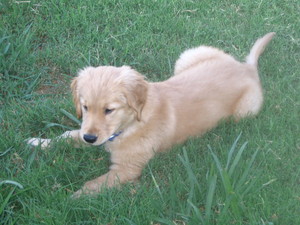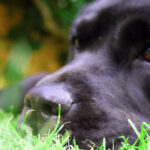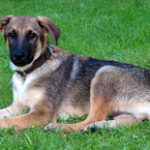A dog is a wonderful addition to a family, and can especially rewarding when you have children. Children learn a great deal about kind treatment toward animals, and who can resist smiling as they watch their little ones squeal with delight while romping with the four legged family member? Yes, dogs can be a blessing. However, before you go out and buy a dog, there are many things to consider. From price to lifestyle, research is essential in picking out your forever friend.
Once you’ve made the decision to acquire a dog, there are still many factors to consider while narrowing your options. If you live in an apartment or rent a house (or even for you military people out there, if you live on post) sometimes there are weight limits and breed restrictions. The age of your children is something to consider as well, along with your lifestyle. Giant cuddly dogs are nice, but maybe not quite suited for a family with very small children. And while it is known that how you raise and train a dog will determine what kind of companion it’ll be, there’s no denying that certain breeds are better suited for families with children. Here is a list of 10 tried and true breeds that make wonderful family pets.
1. Golden Retriever
My husband and I have a Golden ourselves, a bouncing golden ball of fur and energy. The Golden Retriever holds the #2 spot for the American Kennel Club’s (AKC) “2005 Most Popular Dogs in the US” list. These dogs are excellent for children, and that was important to us because we have two children less than 4 years of age. As smart as they are beautiful, they are extremely patient with children. This is not a guard dog for they are friendly with everyone, but make great watchdogs with a loud bark that’ll let you know someone’s there for sure. They are a medium sized breed, and need play and exercise. Luckily they love chasing balls and fetching, so exercise can be pretty easy. They require lots of attention (I know mine does!), and need to be with their people to be happy. Not a dog for people who are away from home most of the time.
Common problems with this breed include hip dysplasia and congenital eye defects. However, by finding a good breeder who has OFA and CERF certification on the prospective puppy’s parents one can minimize this risk. Also beware: some breeders will sell “Rare English Creams” for higher prices. English Creams are simply light colored Goldens and are NOT rare. Such tactics may suggest undesirable breeders, and are therefore a risk.
2. Labrador Retriever
The Labrador is another outstanding example of a family breed. Topping the AKC’s “2005 Most Popular..” the Labrador registrations were nearly triple that of the Golden Retriever, who came in second. They have a breed specific “otter tail” which is thick at the base and tapers at the end, and come in 3 colors: yellow, black and chocolate. There are some out there who advertise the “silver” Lab however the AKC does not recognize this specific color. It is still part of the chocolate spectrum of color, or has even been suggested by some that it is a cross-breed of Labrador and Weimeriner. Also look out for “White” Labs. White, like Silver, is not a recognized color, and is achieved by pairing light yellow labs with other light yellow Labs. The white color causes the skin to lose its pigment, and is at serious risk of skin cancer, allergies and skin problems such as sores.
Interesting fact: the chocolate lab was once considered a genetic flaw and was nearly eradicated by destroying any and all brown pups. They were considered too ugly for show rings and too stupid for field work. However, since then the AKC has recognized the chocolate color as a pure trait, and today the chocolate is as popular as ever.
Labs are great family dogs; they are sweet, playful and smart. Back in the ’80s a new category of labs were added, called the Family Dog. This meant that the family labs were being bred specifically for temperament, good looks, intelligence, and good health. Labs do require daily exercise and love long walks, swimming and retrieving toys. As long as they are exercised and played with consistently, they are also more than happy to sleep at your feet and be calm.
Even with attempts to ensure good health, the Lab does have health risks and are quite prone to hip and/or elbow dysplasia, and certain eye disorders. It is absolutely crucial to make sure that your puppy comes with certification. Try to find a breeder through the AKC at www.akc.org, since they are held to higher standards than your local pet store.
3. Irish Setter
This breed is playful and energetic, with a beautiful red feathery coat. They thrive with human love and companionship, and play very well with children. However, they need lots of exercise and play, and are not well suited to apartment life or inactive families. They may not do as well with very small children, but better with older children who do not knock over easy and can throw a tennis ball or two! They are not aggressive but will bark to alert of strangers and “invaders”. They are slow to mature, but are smart and trainable. Originally bred as a bird dog, the hunting instinct is strong in Irish Setters and the tendency to follow their noses could lead them astray from home if left to their own devices. A good, solid fenced yard is ideal.
The Irish Setter, while usually living roughly 13 years, is prone to certain health problems. Epilepsy, Hypothyroidism, and Hip Dysplasia are fairly common among setters. Progressive Retinal Atrophy used to be quite a problem, however, genetic testing for carriers of this condition make this much less prone than it used to be.
If you have a backyard, lots of energy and love to give, then maybe the Irish Setter is the dog for you!
4. Newfoundland
A personal favorite of mine. It looks like a giant drooling Labrador! Weighing anywhere from 100-150 lbs, and possessing the sweetest of dispositions, the Newfoundland (or Newfie) is truly a gentle giant. The Newfoundland has a heart as big as its body! They are very protective of children and have the nickname “Nature’s Babysitter.” The Newfoundland is a water dog, with webbed feet like a Labrador, thick water-resistant coat and swimming endurance. In fact, the Newfie is legendary for their live-saving water rescues!
Interesting fact: Josh the Newfoundland won Best in Show in 2004 at the Westminster Kennel Dog Show.
There are a few cons to the many pros a Newfoundland possess. Being the giant it is a Newfoundland is not suitable for apartments, it sheds a LOT, and is a big drooly teddy bear. The drool can fly up to 20 ft! They are also prone to hip dysplasia and a heart condition called subaortic stenosis. The Newfie prefers to stay a house dog and be with its people; it is not an outside yard dog. They are very loyal and have been known to grieve when separated from its family. If you are in the market for a big lovable bear with a slobbery smile, then the Newfoundland is the dog for you!
5. Poodle
Oh, the poodle. For many, the Poodle brings to mind the image of a pampered purse jockey. However, the Poodle is actually very intelligent and comes in many sizes. The Poodle was bred for diving and fishing with early fisherman, and now serves as a companion and people pleaser. The Poodle comes in 3 sizes; Standard (over 15 inches at shoulder), Miniature (under 15 inches and over 10 inches), and Toy (under 10 inches from shoulder). Although the Teacup Poodle is out there, it is not recognized as a breed size and standard by the AKC. All of the Poodles are judged by the same standards in regards to coat, gait, etc. The name differences refer to size only. Poodles’ fur do not shed, making the Poodle ideal for those with allergies, and the coats come in a variety of colors.
Interesting fact: The infamous Poodle clip is not a fancy hair-do; it in fact dates back to when the Poodle was a working dog. Poodles’ fur is thick and gets very heavy when wet, which presented a problem while diving in the cold waters. It became vital to cut off any excess and unnecessary fur, while keeping enough on to protect the dog. The fur on the head was left to keep the dog’s head warm (remember when your mom made you wear hats in the winter?), the fur on the chest was to keep vital organs such as heart and lungs warm, the fluffs on the rear was to keep the kidneys warm, the bands of fur around the ankles kept the joints warm, and the ball on the tail…well….that was more of a “bobber” so fisherman could see the dog’s location in the water!
Standard Poodles tend to be better with children than the other two sizes, although all three are potentially great pets for those with children. Origin, experience and handling are all factors when introducing a Poodle to children, but the Poodle is extremely intelligent and a people lover. Health risks can include cataracts, entropion, and are predisposed to mammary tumors. Having your Poodle spayed does decrease the tumor risk, so it is important to have this done if you are not breeding your dog. (Really, all animals should be spayed or neutered if they are not for breeding. It is better for their health, and will help to bring down the number of unwanted animals into our shelters.)
Another interesting fact: because of the Poodle’s intelligence and allergy-friendly coat, it has been cross-bred with other dogs like Labradors to create non-recognized breeds such as the Labradoodle.
6. Bernese Mountain Dog
Not quite as well known as most breeds, but it should be because the Bernese Mountain Dog has all the makings of a family pet for life! This large, sturdy dog typically weighs anywhere from 80-110 lbs, and is usually black with rust colored markings and a white blaze running from the forehead and spreading to the chest. Because of their very thick fur, this dog is not well suited for hot weather climates. (Who wants to wear a fur coat in the blazing heat?) This very intelligent breed loves children, and is great with them because they are happy and gentle dogs. Not aggressive, but will alert the family of “invaders”. They stay in their “puppy” phase for a few years, with youthful exuberance and curiosity. The Bernese Mountain Dog is easily trained, self confident and loyal to their people. A light but firm hand is needed in guiding this breed, as they are quite sensitive. They are also pretty friendly with strangers, and good with other dogs/pets. This breed does not need a large house, because they are not very active indoors. However, they will need a large fenced yard to romp and play in, and do not do well for apartments. (Although, what apartment complex is going to let a 100lb dog stay there? The pet fees would be HUGE.)
There are certain health risks associated with this breed. Unfortunately, cancer is a big problem, as well as hip dysplasia and elbow dysplasia. The average life span is usually 6-8 years, but can run up to 12 years with good luck and health.
7. Bichon Frise
Once a pampered royal lap dog, the breed later often worked as a circus dog doing tricks. It is a small, sturdy breed with poofy fur and is also recommended for families with allergies. The Bichon Frise’s charisma, intelligence and playful nature make it a wonderful companion. The Bichon Frise is described as a sweet natured, loving, and possessing of a happy attitude. It is very good with children, although you must be careful if you have a child less than four years old. The Bichon Frise is not a big dog, and may be mistaken for a stuffed toy. This could lead to rough behavior like poking and yanking, which no dog will tolerate for long.
This cheerful, charismatic breed tends to weigh 10-18 lbs depending on the size of the particular dog. Care is needed to keep their fur groomed and clean, since an unkempt Bichon would be at risk for sores and other serious skin problems. Daily brushing is recommended, and a little trip to your local groomer will keep their fur neat and trimmed. The Bichon Frise demands a commitment from you, as it may live up to 18 years!
8. Collie
A classic favorite for anyone who’s ever seen Lassie save Timmy from….well, himself. The Collie is a member of the herding group of dogs, and is a very active breed. Its herding instinct will sometimes lead it to try and “herd” children, which should be discouraged. The Collie is very sweet and will be protective of its family. This breed comes in three distinct varieties; the Collie (with either smooth or rough coats), the Border Collie and the Bearded Collie. However, the Border Collie is a high active dog who needs to work to be happy (“No sheep, no Border Collie”) and the Bearded Collie is a high maintenance dog that requires a lot of grooming to keep the coat healthy. The smooth coated or rough coated Collie, or Lassie dog, is a better match for families with children, a yard to romp in, lots of love, and play.
Even though the Collie is a fairly healthy breed by most standards, the few risks involved are pretty serious. Collie eye anomaly, Collie nose (Discoid Lupus Erythematosus) and Progressive Retinal Atrophy are a few of the more common afflictions facing Collies. Still, a potentially wonderful pet!
9. Bull Terrier
Now this is not the Pit Bull that is infamous for vicious attacks. The Bull Terrier is actually a very friendly dog that loves human company. The Bull Terrier is bred to be a companion. They are very good with children, but their occasionally stubborn nature might not be a good match for a first time owner. They are very energetic, and may not be a fit for every house with children (like those with very small children) as they may have a tendency to knock them over with playful exuberance. They’re a pretty safe bet with older children. They are not good for people who are away most of the day, since their jaws can be damaged by activities done while bored (ie. intense chewing). The Bull Terrier’s defining physical trait is the egg-shaped slope of the muzzle that goes right to the nose.
Interesting fact: the Target mascot dog “Bulls-Eye” is a Bull Terrier.
They tend to weigh approx. 40-80 lbs, and a few common health risks are deafness, weight gain, and kneecap displacement. As long as there is consistent exercise, a Bull Terrier will do well in an apartment. When out in public it is important to keep it on a leash as it may get too aggressive with other dogs. Bull Terriers are fiercely loyal to their human companions. They are a great fit for an active family!
10. Standard Schnauzer
My dad had a schnauzer as a kid, and he loved that dog. Said he was just a cool, fun dog. That accurately describes this smart, sociable companion. It is a charming breed with an intellect to match. The Standard Schnauzer is best suited (of the different breeds of Schnauzer) for families with children since if they are well trained and socialized, they are very reliable companions for kids. In fact, one of their original duties in Germany was sometimes to watch over children and protect them. They sometimes take time to warm up to “invaders”, but once in the good graces of a schnauzer you can expect love and protection. They are an active breed that needs family attention, or they may find ways to have fun that you won’t like. Not for the sedentary owners, as they require lots of vigorous exercise. The Standard Schnauzer has a wiry gray (or salt and pepper type) coat, and range from 30-50 lbs. It is generally prone to hip dysplasia and minor eye problems, but mostly a healthy breed.
If a bearded smile and lots of play and protection is what you’re looking for, then look no further than the Standard Schnauzer!
Once you have narrowed your search and found a breed you like, it is important to research the breed in depth. Finding a reputable breeder is imperative because pet stores more often than not are supplied with “puppy mill” dogs, and might not be healthy. The breeder should ask you as many questions as you ask them. They should not always have litters ready for sale, but rather planned litters with their dogs set at intervals (so as to not over-breed a dog). If you are serious about getting a healthy puppy (that you’ve researched) then plan on waiting a little bit, even a couple of months. Breeders will often have a waiting list of prospective parents who have put down deposits on puppies that haven’t even been born yet. If you are looking for a companion, then “Show Quality” is not as important as “friendly and healthy”. You will want to meet the breeder and the parents of your prospective pup. The mom should not be aggressive when you meet the puppies, she should be friendly and calm. The father should not be aggressive either, as aggressive traits could pass to your pup. Make sure that your pup comes with OFA (Orthopedic Foundation for Animals) certification for hip and elbow dysplasia. Get it in writing! (Sometimes unreputable breeders will say pups are certified when they are not.) If you have children, have them meet the puppy to make sure the pup is a good fit for your kids. I wouldn’t recommend a very shy, apprehensive puppy because it could lead to fear-related aggression later on. Your future friend should be playful and trusting of your presence.
Now I’m not saying that you shouldn’t adopt from the animal shelters. In fact, I love the shelters and what they do for animals. They spay and neuter the animals, place them in homes, and the fees are very affordable. However, if you wish to adopt, make sure you get as much info as you can about the dog you are interested in, including breed and history of the animal. Some dogs have histories and medical problems that will require a lot of extra care. Have your family meet with the dog to see if it is a match for your home. Most shelters have staff there that will help you find a match for your family and lifestyle, so tell them exactly what you are wanting in a dog.
Most importantly, the breed of dog does not matter if it is not trained, socialized, exercised and loved. The best dog will still behave badly if left untrained or ignored. Exercise, discipline and love are the keys to a happy family with a happy dog! Good luck!






